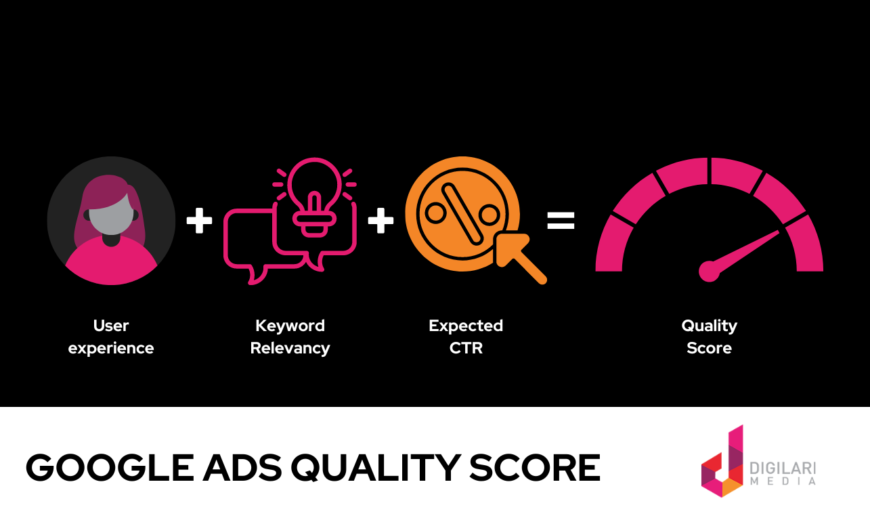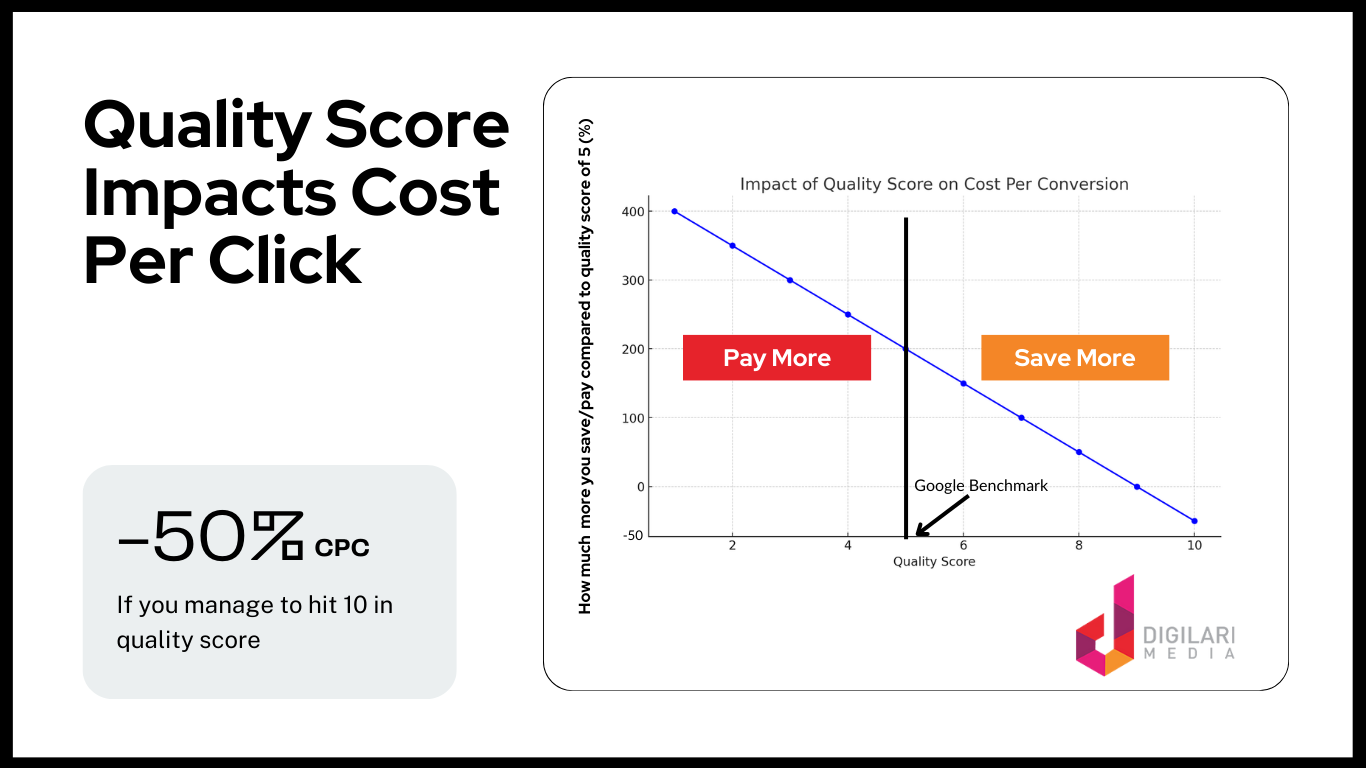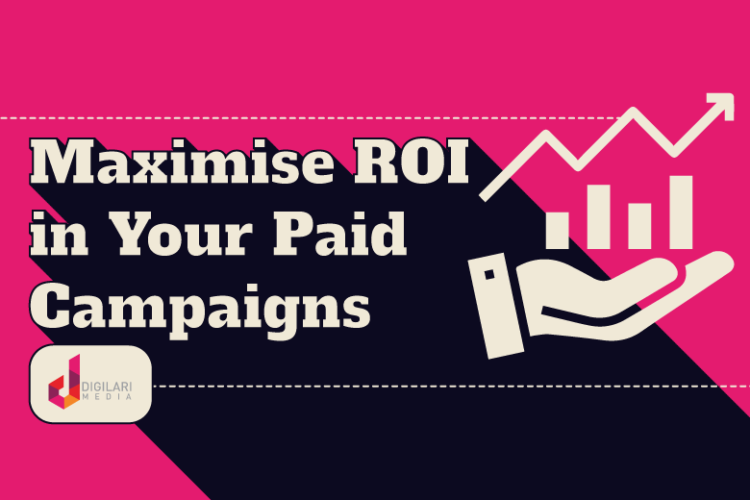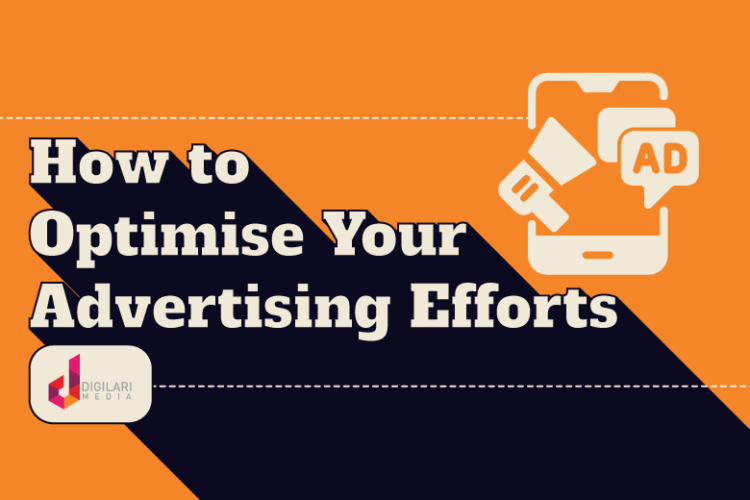
Google’s Quality Score is a crucial metric for any advertiser using the Google Ads platform. Essentially, it’s a measure from 1 to 10 of how relevant and effective your ads are. But how is this score derived? With the help of this guide, you will be able to learn more about the Quality Score and optimise your campaigns for greater results.
Table of Contents
Key Components of Google Quality ScoreThree essential factors influence your Quality Score:
- Ad Relevance: How well does your ad match the user’s intent?
- Expected Click-Through Rate (Expected CTR): Are users likely to click on your ad?
- Landing Page Experience: Do users find your page useful and relevant after clicking?
Let’s explore these elements in more detail!
Ad Relevance
Ad relevance ensures users who are truly interested in what you have to offer see what you have to offer.
Understanding Ad Relevance
Google Ads shines a spotlight on your products or services at the exact moment users search for them. Your ad relevance relies on:
- Proper account structuring, reflecting your business offerings.
This includes organising your Google Ads account in a way that mirrors the layout and hierarchy of your business’s products or services.
- Aligning chosen keywords with individual ad groups.
The practice of carefully selecting and grouping keywords in your Google Ads account makes sure they correspond directly with specific ad groups ensuring ads are as relevant as can be to the search queries.
- Crafting messages that resonate with the keywords.
For example, an electrical service business might create specific campaigns for “Air Conditioner Installations,” “Solar Panel Installations,” and “General Domestic Work,” ensuring each ad pinpoints a specific user query.
Boosting Ad Relevance
To optimise ad relevance:
- Use distinctive campaigns to set apart different product/service categories.
- Use targeted ad groups and keywords to further refine these categories.
- Create tailored ad copy that incorporates every keyword.
Are you struggling to organise your Google Ads account effectively?
Expected Click-Through Rate (Expected CTR)
The likelihood that users will click on your ad is measured by expected CTR. In a way, it’s a testament or proof of the attraction and effectiveness of your advertisement.
Deciphering Expected CTR
Imagine Google choosing which ads to show based on their “performance” or relevance to a user’s search query. Your advertisement might not get the attention it deserves if it doesn’t outperform your competitors.
Amplifying Expected CTR
For an impressive CTR:
- Choose your keywords carefully, ensuring specificity.
By selecting keywords carefully, you can make sure that your Pay-Per-Click (PPC) ads closely match the intent of searchers, which in turn can improve relevancy, improve conversion rates, and possibly save advertising expenses. To achieve the best campaign performance, it is important to target specific, relevant terms instead of broad terms.
- Engage users with compelling ad copy.
Creating captivating ad copy that draws in readers and resonates with their needs increases the chance that they will click through and convert. Establishing a connection with your audience through engaging and persuasive messaging is key.
- Recognise that past performance influences future appearances.
Future visibility is significantly influenced by past performance; consistent success can strengthen opportunities, while previous shortcomings may limit them.
Unsure if your ad copy is influential enough?
Landing Page Experience: Beyond the Click
The user journey doesn’t stop with the click, your landing page plays a pivotal role in conversion.
Defining Landing Page Experience
Consider your landing page to be a continuation of your brand’s promise. An effective landing page provides value and encourages conversions by connecting with both the user’s original search query and your advertisement.
Optimising Landing Page Experience
For a positive landing page experience:
- Keep the landing page, the ad, and the user’s search all consistent.
- Ensure the page can be navigated easily.
- Aim for fast load times, ideally below 3 seconds.
- Emphasise a strong and clear Call To Action (CTA).
Are your users bouncing off your landing page without converting?
So, What is a Good Google Quality Score?

Marketers need to strive for an excellent Quality Score if they want to improve the performance of their Google Ads. Every new keyword receives a score of 6 out of 10. Google sets its benchmark at 5, anything below 5 is considered “below average”. Advertisers need to aim higher than this average. Focusing on the three elements detailed in this guide (landing page experience, expected click-through rate (CTR), and ad relevancy) will influence this score.
Essentially, the goal should be to attain and sustain a Quality Score greater than 5, as this lowers advertising expenditures and enhances ad placements.
A Practical Peek into Quality Score
Imagine four Brisbane-based electrical businesses (electricians) competing for the same keyword. Analyse this situation:
Business | Max Bid | Quality Score | Discount/Increase | Actual CPC | Ad Rank* |
Lightning Electrics | $2 | 10 | -50% | $1.61 | 20 |
Speed of Light | $4 | 4 | +25% | $3.01 | 16 |
Wire Me | $6 | 2 | +150% | $4.01 | 12 |
Sparky Home | $8 | 1 | +400% | $4.01 | 8 |
* Ad Rank = Max Bid x Quality Score. |
Given its high offer, one might assume that Sparky Home would inevitably dominate the advertising space. However, the Quality Score evens the odds. Lightning Electrics wins with a relatively low bid because of a greater Quality Score. This example highlights the value of a Quality Score, it can result in better ad placements and cost savings when focused on.
Wrap Up: Mastering Google Ads Quality Score Essentials
Google’s Quality Score is a combination of your ad’s expected click-through rate, relevancy, and landing page experience. By mastering these elements, advertisers can not only optimise their ad spend but also offer a positive user experience. Use this guide as a blueprint to refine your campaigns and maximise returns.



